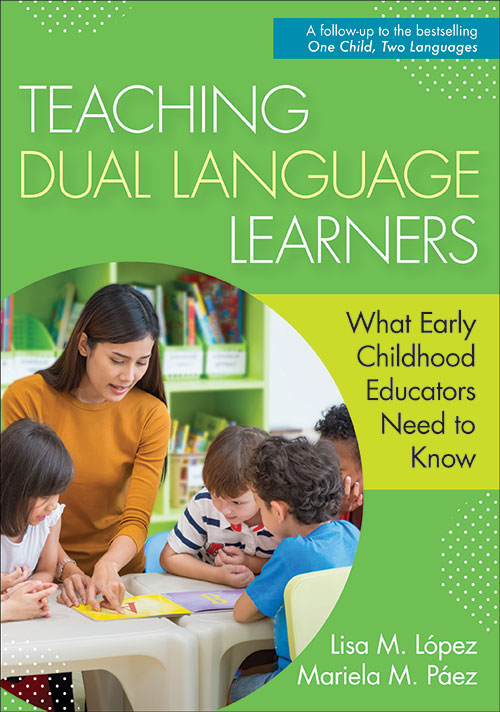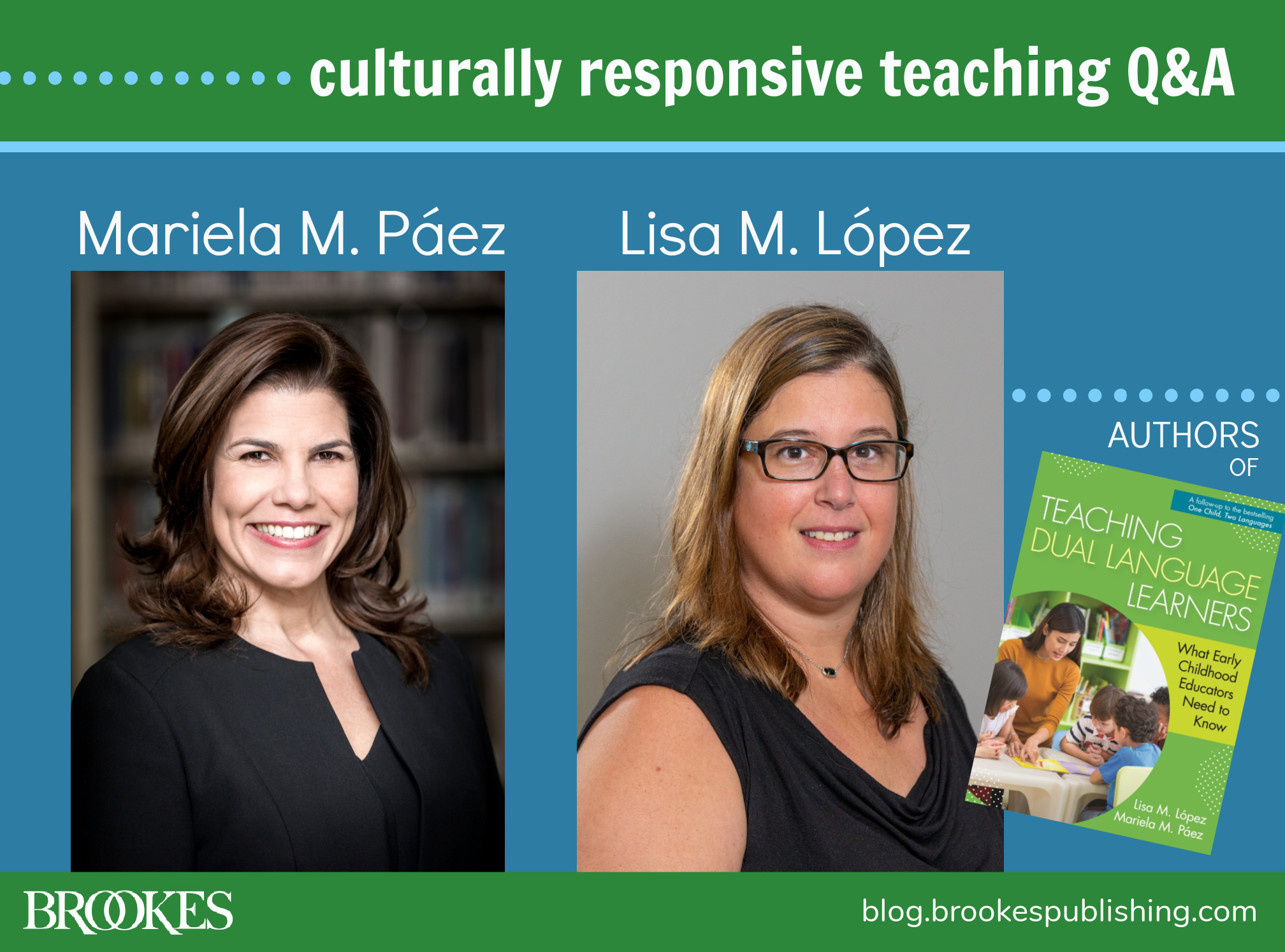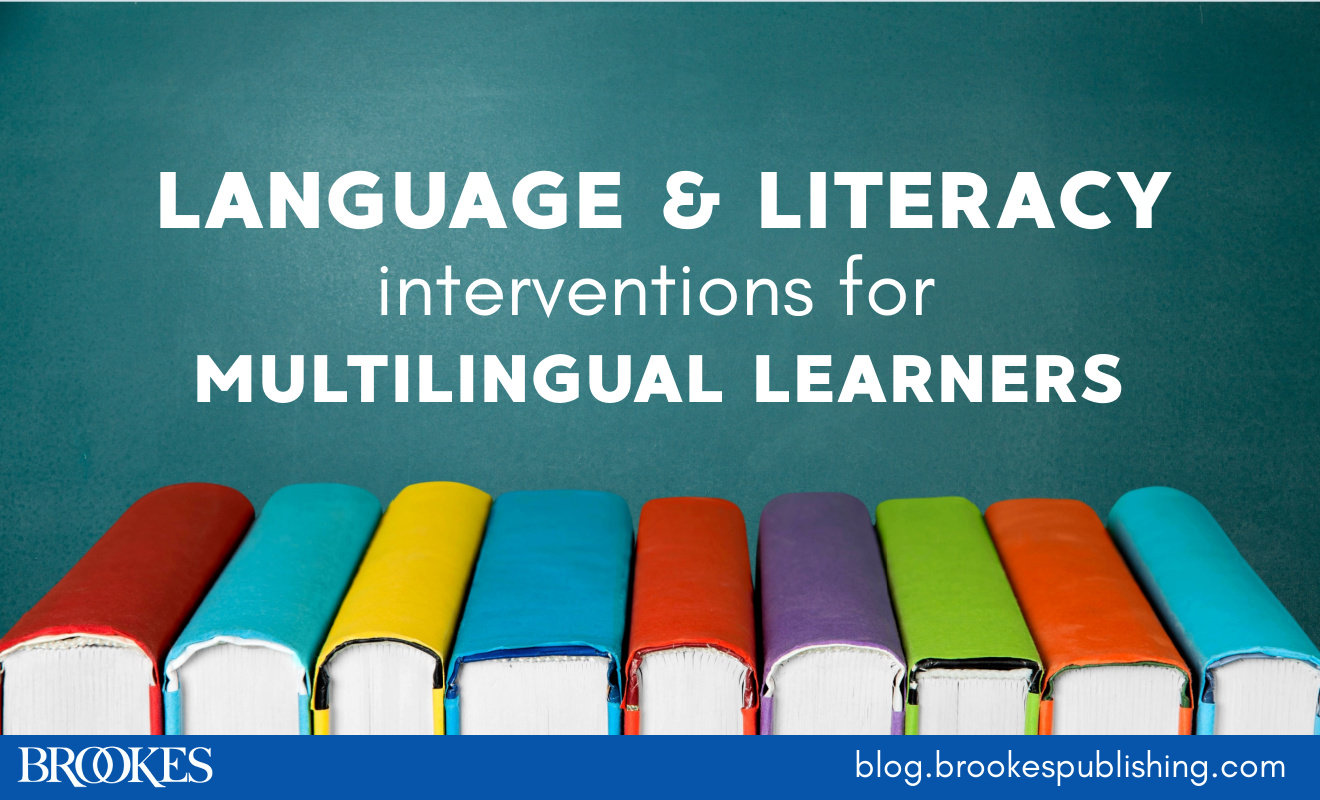10 Great Ways to Help Dual Language Learners Thrive
June 25, 2024
 What are some things teachers can do to improve outcomes for culturally and linguistically diverse students? Adapted from the practical guidebook Teaching Dual Language Learners by Mariela M. Páez & Lisa M. López, today’s post offers ten effective strategies for supporting academic success and language and literacy development for the increasing number of DLLs.
What are some things teachers can do to improve outcomes for culturally and linguistically diverse students? Adapted from the practical guidebook Teaching Dual Language Learners by Mariela M. Páez & Lisa M. López, today’s post offers ten effective strategies for supporting academic success and language and literacy development for the increasing number of DLLs.
Learn about your students’ home languages and cultures. Make the effort to learn some key words in the children’s home language and engage in and learn more about your students’ languages and cultures. The understanding that teachers are interested in and willing to learn more about children and families will help create a positive classroom climate.
Build background knowledge. Background knowledge involves a foundational understanding of concepts, which is a key ingredient for reading comprehension. Introducing children to different cultural traditions and experiences can help broaden all children’s background knowledge. Build background knowledge by going on both virtual and real field trips, taking a nature walk, inviting guests into the classroom for show-and-tell, and fully engaging the classroom environment with the thematic units covered. These concrete experiences will allow all young children to build the contextual knowledge they need to comprehend narratives presented orally and in print.
Try prereading books. It’s helpful for DLLs if the book being read in whole group has been preread to them in their home language, either at home or during small-group time before the whole-group reading activity. This takes some planning, but it will help your DLL students follow the storyline and learn new vocabulary.
Supplement book-reading strategies. DLL children especially benefit from gestures to accompany shared book reading, such as pointing with a finger to particular words and running a finger along the text.
Provide scaffolds during whole-group time. An example of an effective scaffold is pairing DLL children with a buddy so they can engage in turn and talk activities. Instead of each child sharing with the entire group, the children can share with their buddy.
Play vocabulary games. Include a word wall in the classroom, highlight words that DLL children recognize in their home language or in English, create games for identifying words from cards, or play matching games that bring together pictures and words. These are great ways to help children build their sight vocabulary.
Provide explicit vocabulary instruction. For DLLs, vocabulary instruction also needs to include systematic instruction with child-friendly definitions accessible to beginning English speakers. Provide the vocabulary words in context and give children the opportunity to practice those words throughout the day. For example, introduce new words in small group along with pictures or concrete examples that represent the meaning of the word.
Encourage writing attempts in both languages. DLL children’s first attempts at writing might involve their home language skills as they write familiar sounds and words. Encourage this type of writing to motivate and support children’s writing development. For DLL children who are emergent writers, you might write their dictations and read back to them exactly what they said to make connections between spoken and written language. You can also help support these skills at home by providing resources in multiple languages that show families how to encourage writing development.
Seek out tech tools in the child’s home language. Using developmentally appropriate technology tools available in a child’s home language can help that child continue building on their first language skills—even if you don’t speak the child’s language. This is a great use of one-on-one learning time for a DLL child, and it will also help your student feel more comfortable after hearing a new language for most of the day.
Support continued home-language development. Research has shown that the more exposure and experience children have in their first language, the easier it is for them to acquire a second language. Encourage parents to continue using and supporting the home language with their DLL children, while explaining the benefits of transfer in learning languages. Communicate to families that exposing their children to their home language in direct, high-quality interactions will help children learn the school language, too. And if you speak only English, you might consider inviting speakers of your students’ home languages into the classroom to engage with the children.
As the authors of Teaching Dual Language Learners say, “both diversity and bilingualism must be viewed as assets in order to embrace best practices for working with the DLL population.” Remember that your students’ dual language learning is a strength—and for much more expert guidance on teaching young DLLs effectively, be sure to pick up the practical guidebook behind this post!





Write a Comment
Your email address will not be published. Required fields are marked *
Post a Comment